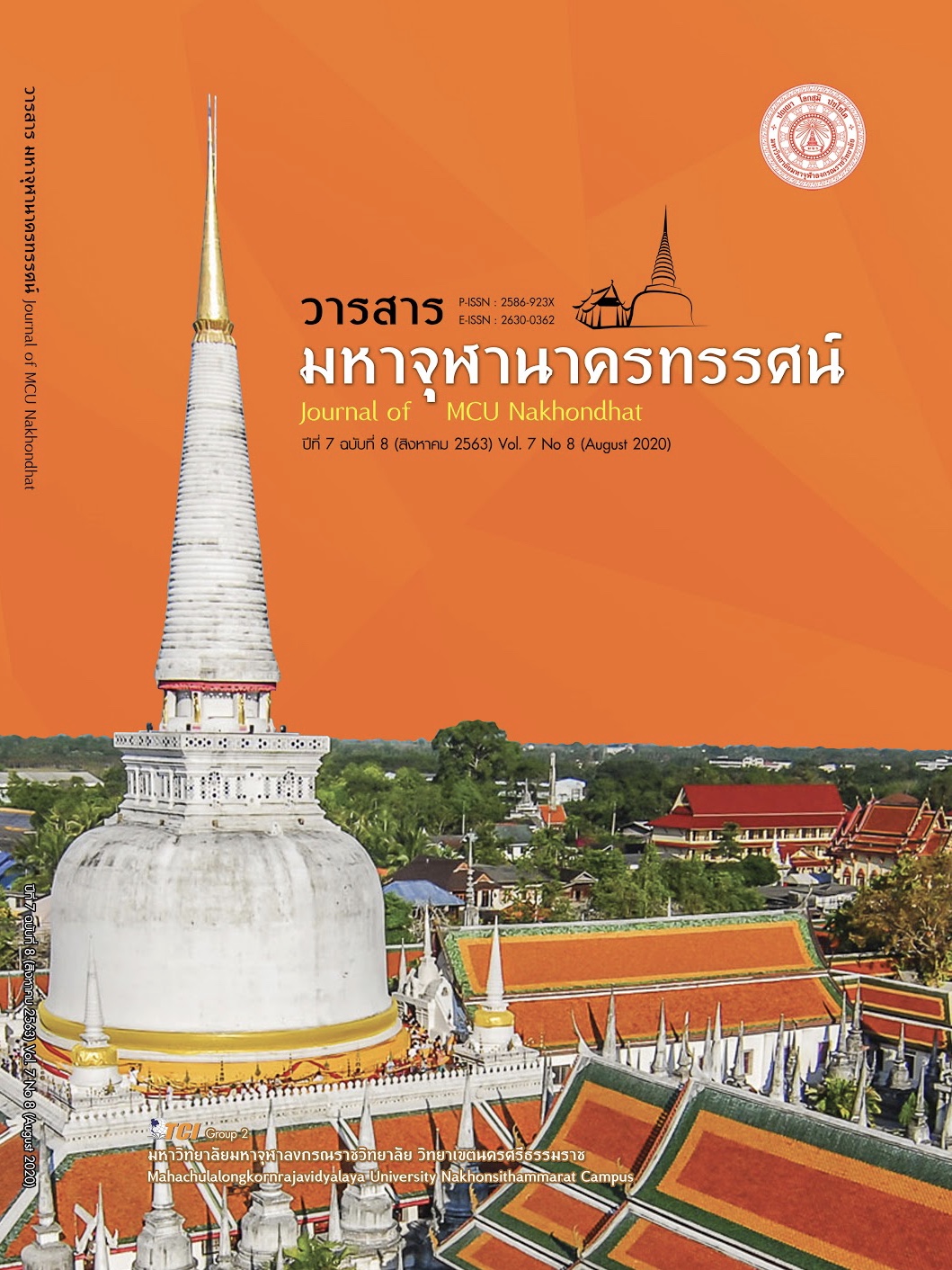ACTIVE PUBLIC – PRIVATE PARTNERSHIPS DEVELOPMENT FOR VOCATIONAL EDUCATION IN INDUSTRIAL TRADES’ AREA OF STUDY
Main Article Content
Abstract
This article was research and development using mixed method between quality and quantitative approach. The objective of the study were 1) to study the need assessment of active public – private partnerships development for vocational education in Industrial Trades’ Area of Study and 2) to develop the active public – private partnerships for vocational education in Industrial Trades’ Area of Study. There were 2 main process of the research implementation which were relevant to the objectives. The research findings were as follow: 1) The study of operating condition and the need of active public – private partnerships for vocational education in Industrial Trades’ Area of Study development revealed the overall of degree of success was not conformed with the overall of importance. Means of the overall degree of success was at moderate level ( = 3.21, S.D. = 0.64) while means of the overall importance was at the highest level (
= 4.55, S.D. = 0.55). The priority needs index was indicated that there were the needs for the active public – private partnerships for vocational education in Industrial Trades’ Area of Study at all aspect (PNI = 0.422). Range of the priority needs index was between 0.417 to 0.423. 2) The result of the active public – private partnerships for vocational education in Industrial Trades’ Area of Study’s development revealed 33 practices and 72 mechanism of the active public – private partnerships for vocational education in Industrial Trades’ Area of Study’s development according to the system approach: 1) there were 19 practices and 38 mechanisms for input. 2) there were 17 practices and 28 mechanisms for process and 3) there were 2 practices and 6 mechanisms for output. vocational education in Industrial Trades’ Area of Study’s development approaches.
Article Details
References
ชัยพฤกษ์ เสรีรักษ์. (2558). ปัญหาแรงงานไทย. เรียกใช้เมื่อ 1 เมษายน 2563 จาก http://www.dailynews co.th/content/edu/22515
ณัฐสิฎ รักษ์เกียรติวงศ์. (2561). การปฏิรูประบบการศึกษาไทยเพื่อเพิ่มความสามารถในการแข่งขัน: การปฏิรูปอาชีวศึกษา. กรุงเทพมหานคร: สถาบันวิจัยเพื่อการพัฒนาประเทศไทย.
ธนาคาร คุ้มภัยและคณะ. (2563). รูปแบบการจัดการเรียนการสอนเรื่องเทคโนโลยีอินเทอร์เน็ตของสรรพสิ่งผ่านการเรียนรู้แบบโครงงานเป็นฐาน. วารสารวิชาการสถาบันการอาชีวศึกษาภาคใต้ 1, 5(1), 33–41.
ปรีดี เกตุทอง. (2556). การพัฒนารูปแบบการจัดการความร่วมมือระหว่างสถานศึกษากับสถานประกอบการในการจัดการอาชีวศึกษาประเภทวิชาอุตสาหกรรมท่องเที่ยวในกลุ่มจังหวัดสามเหลี่ยมอันดามัน. ใน ดุษฎีนิพนธ์การศึกษาดุษฎีบัณฑิต สาขาวิชาศึกษาศาสตร์. มหาวิทยาลัยสุโขทัยธรรมาธิราช.
สาโรจน์ ขอจ่วนเตี๋ยว. (2562). กลยุทธ์การบริหารงานประกันคุณภาพของวิทยาลัยเทคนิคสังกัดสำนักงานคณะกรรมการการอาชีวศึกษา. ใน เอกสารวิชาการ. มหาวิทยาลัยศรีปทุม.
สำนักงานคณะกรรมการการอาชีวศึกษา. (2551). สรุปสาระสำคัญพระราชบัญญัติการอาชีวศึกษา พ.ศ. 2551. กรุงเทพมหานคร: สำนักงานคณะกรรมการการอาชีวศึกษา.
สำนักงานคณะกรรมการการอาชีวศึกษา. (2560). แผนพัฒนาการอาชีวศึกษา พ.ศ. 2560 – 2579. กรุงเทพมหานคร: สำนักงานคณะกรรมการการอาชีวศึกษา.
Asian Development Bank. (2017). Key Indicators for Asia and the Pacific 2017. 48th edition. Mandaluyong City, 1550 Metro Manila, Philippines: 6 ADB Avenue.
Hitendra Pillay et al. (2017). Creative Training Techniques Handbook. Minneapolis, MN: Lakewood.


